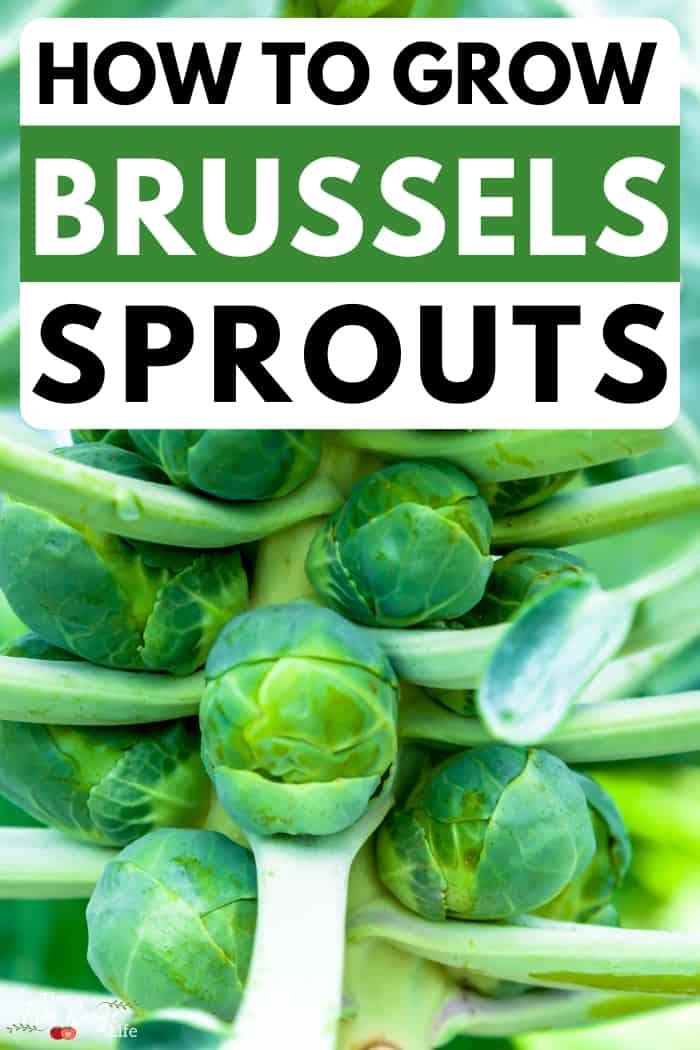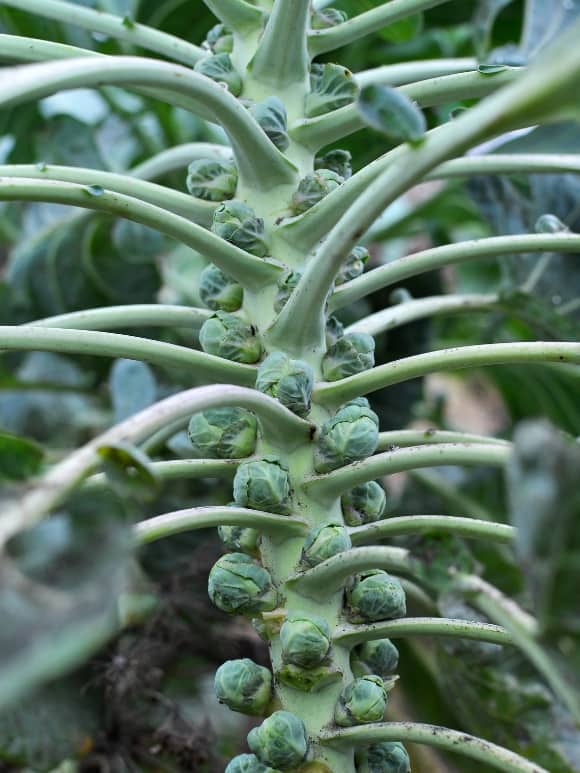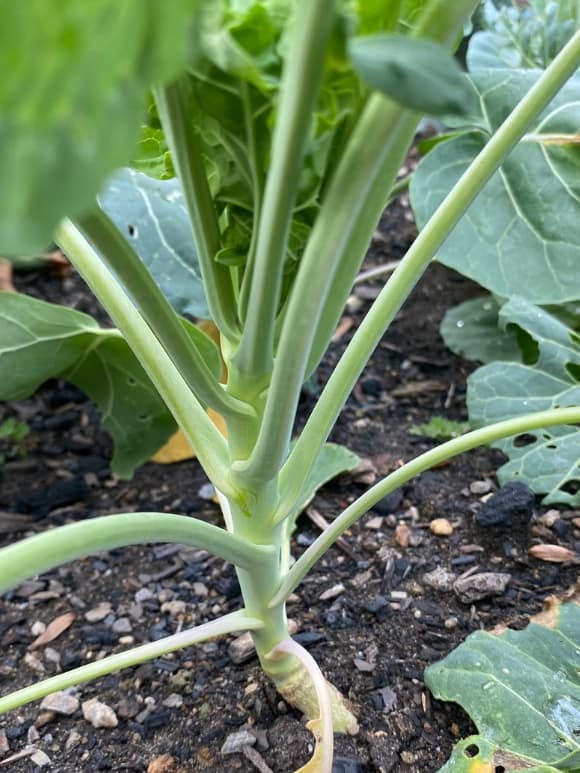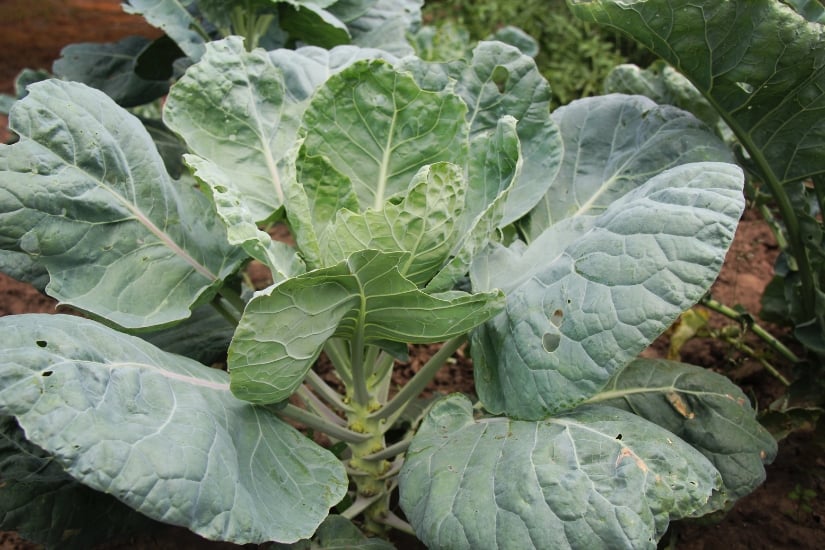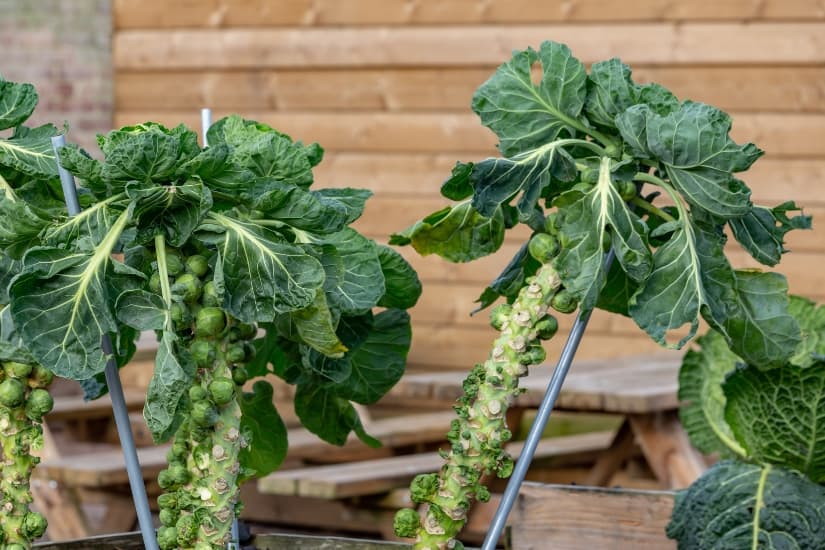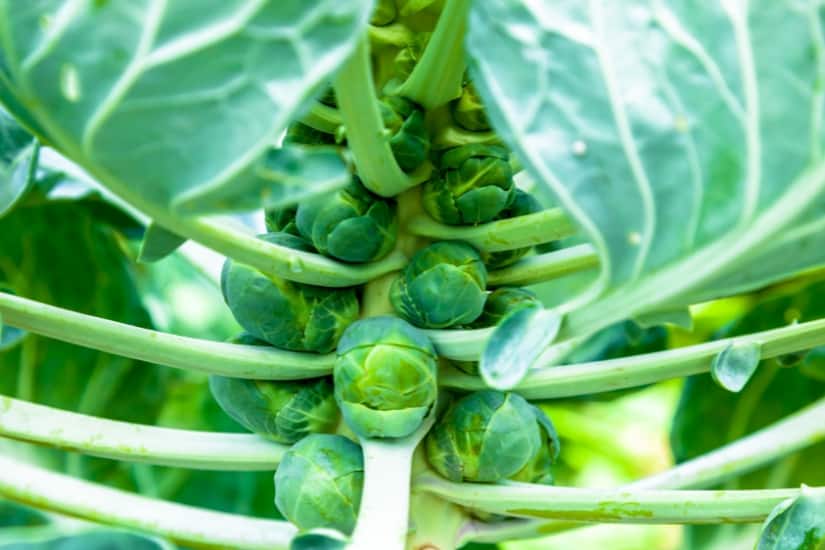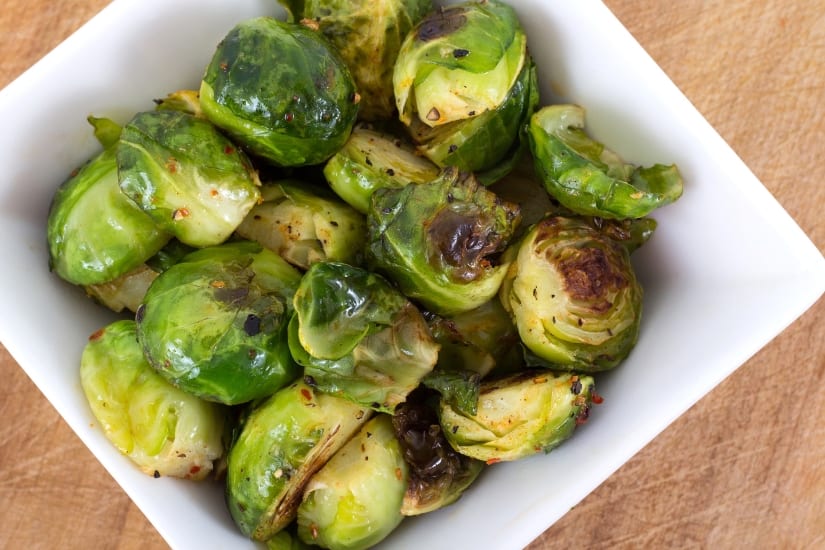Are you ready to grow Brussels sprouts in your garden this year? Learn how to grow Brussels sprouts from seed to harvest!
Brussels sprouts are a cruciferous vegetable in the brassica family. They are related to broccoli, cauliflower, cabbage, kale, and collards to name a few.
This site contains affiliate links. If you make a purchase using one of these links, I may earn a commission. Please see my disclosure page for more information about cookies collected and our privacy policy.
Brussels sprouts are a cool weather crop, which means they grow best in cooler regions, or in the fall and early spring. The plant is hardy to about 20°F.
Brussels sprouts look a little bit like tiny, mini cabbages! They are small, tight heads of leaves that grow on a tall leafy stalk.
Flavor improves with cooler weather- and even a few frosts. If harvested as the weather warms the Brussels sprouts may be a bit bitter.
Brussels sprouts may not be a favorite in many households, but that’s probably because you’ve not had them homegrown or prepared correctly!
With tons of vitamins, minerals, fiber, and antioxidants, Brussels sprouts are a wonderful addition to your diet. So make room for them in your garden this year!
When & Where to Plant Brussels Sprouts
As mentioned, Brussels sprouts are a cold loving crop. They thrive in cooler temperatures and can even handle frost.
Brussels sprouts need a long growing season, so you need to plan ahead if you want a harvest.
If planting in the fall, you want to plant your plants at about 4 months before your first frost date. If starting from seed in the fall, start the seeds 3-4 weeks before this planting date.
In the spring, start seeds 8-10 weeks before your last frost date, and transplant to the garden about 2 weeks before your last frost date.
You can play around with these times a little, and try to plat out even sooner in the spring. Young plants aren’t as frost hardy, so if the temperatures drop, you may need to cover them to protect them from damage.
Brussels sprouts need full sun- or a minimum of 6 hours of sun a day- and rich, well drained, moist soil.
Best Brussels Sprouts Varieties to Try
Not sure which type of Brussels sprouts to try? You can choose hybrid varieties if you don’t plan on seed saving, or heirloom, if you do,
Here are a couple options:
- Long Island Improved (Heirloom):A reliable, heavy-yielding variety. Compact plants with 50 to 100 sprouts per stalk. 80 days to harvest.
- Catskill (Heirloom): Heavy producer, thick stalks. 80 days to harvest.
- Green Gems (Hybrid): Prolific plant with lots of sprouts, robust, hardy plant that can handle frosts. 90 days to harvest.
- Divino (Hybrid): Tall stalks resist lodging (falling). Medium size sprouts. 110 days to harvest.
- Hestia Hybrid: Vigorous plant that tolerates warm and cool weather. Uniform and upright growth. 100 days to harvest.
Starting Brussels Sprouts from Seed
Brussels sprouts germinate easily from seed, so growing your plants from seed can save you a lot of money.
Remember, start your Brussels sprouts seeds at least 8-10 weeks before your last frost in the spring, or about 16 weeks before your last frost in the fall.
Here’s how to grow Brussels sprouts from seed:
- Sow seeds 1/2 inch deep in a quality soil.
- Keep the soil evenly moist at all times.
- Keep your seed trays under grow lights or in a sunny window.
- Seeds should germinate in less than 2 weeks.
- Once the seedlings sprout, keep the grow lights on to prevent the seedlings from getting leggy and keep the soil moist at all times.
On warmer (at least 40F) sunny days, you can set your seed trays outside and let them get some natural sun- this will help prevent legginess as well.
Once they seedlings have at least 4-5 true leaves (about 3 weeks), they can spend more time outside. This will help them harden off in preparation for transplanting.
You can transplant your seedlings to the garden about 2 weeks before your last frost, or sooner if you can protect them on very cold nights.
You can also choose to direct sow your Brussels sprouts seeds into the garden. If you choose to do this, plant the seeds 2-3 inches apart and water well.
Germination is usually slower and less reliable when seeds are sown directly in the garden.
Growing Brussels Sprouts: Care
The final spacing of the Brussels sprouts plants should be 12-24 inches apart. If planting in rows, space rows at least 30 inches apart.
Before planting make sure to dig in lots of well rotted compost, manure, and organic matter. Brussels sprouts are heavy feeders- so don’t skimp! You can also choose to feed with an organic fertilizer throughout the growing season.
Mulch the plants well to protect the roots, prevent weeds, and to preserve water. Brussels sprouts like lots of water, but that doesn’t mean they want to be swimming in it!
Keep the soil moist but not soggy. If you don’t get rain, aim to water weekly.
Brussels sprouts have shallow roots, which means weeding can damage them. So be careful with tools. Mulching is your best defense against weeds.
Brussels sprouts can get quite tall (2-3ft!), and may need staking. You can use wooden stakes or rebar posts if they are starting to fall. Piling soil at the base of the plant can also help prevent the plant from falling.
To encourage the sprouts to mature faster, and at the same time, you can top the plants 3-4 weeks before harvest. To top the plant simply pinch off the top leaves.
Brussels sprouts can benefit from extra fertilizer when the plants reach about 12 inches in height.
Common Brussels Sprouts Pests & Disease
There a a few pests that may trouble you when growing Brussels sprouts.
In my garden, the cabbage worms are the most problematic for all my brassicas (though they seem to prefer cabbage over Brussels sprouts).
One of the best ways to prevent caterpillars- and other flying pests- is to use a floating row cover. Row covers are easy to use and ensures that many insects can’t reach your plants. This also means those white cabbage moth butterflies can’t lay their eggs on the plants too!
Cutworms can also be a problem at planting time. I like to cut up toilet paper rolls and make collars around the stems of young plants. That seems to help deter cutworms.
If flea beetles are a problem, try using diatomaceous earth to deter them.
To deter pests you can try companion planting with things like marigolds.
Some disease that Brussels sprouts are susceptible to are:
- Clubroot
- Black rot
- leaf spot
- Powdery mildew
Many diseases can be prevented by proper spacing and rotating your beds so that your Brussels sprouts aren’t planted in the same place as other brassicas were the previous year.
And remember good, healthy soil goes a long way in preventing disease and pests!
Harvesting Brussels Sprouts
You can begin harvesting Brussels sprouts when the sprouts are firm and are at least 1 inch in diameter.
Start harvesting from the bottom of the stalk. These sprouts are more mature than those at the top.
Keep in mind that light frost improves the flavor of the sprouts- so if you’re growing in the fall, you may want to wait until you’ve had a frost before harvesting.
Also remember that warm weather makes the sprouts bitter. So if the weather is warming in the spring, harvest sooner than later.
To harvest, remove the stalks by twisting them until the break off the plant. Alternatively, you can snip them off with scissors or shears.
You can also pull up the entire plant, cut off the roots and hang it upside down in a cellar or garage. And harvest the sprouts as needed. They will store about a month this way.
Eating and Preserving Brussels Sprouts
Once harvested, you can store Brussels sprouts in plastic bags in the fridge for 2-3 weeks. You can use Green Bags to help extend the life. Don’t wash them until they are ready to be used.
If you’d like to preserve your Brussels sprouts, here are some options:
- How to Freeze Brussels Sprouts
- How to Dehydrate Brussels Sprouts
- How to Can Brussels Sprouts (Pickled)
And if you need some new and delicious ways to prepare your Brussels Sprouts, try these:
- Teriyaki Brussels Sprouts
- Roasted Brussels Sprouts with Bacon
- Garlic Roasted Brussels Sprouts
- Maple Balsamic Brussels Sprouts
(If you can’t tell- roasted is the way to go with Brussels sprouts!).
Ready to grow more? Check out these guides:
Growing Peas: How to Plant, Care, and Harvest
Growing Spinach in the Garden: From Seed to Harvest

